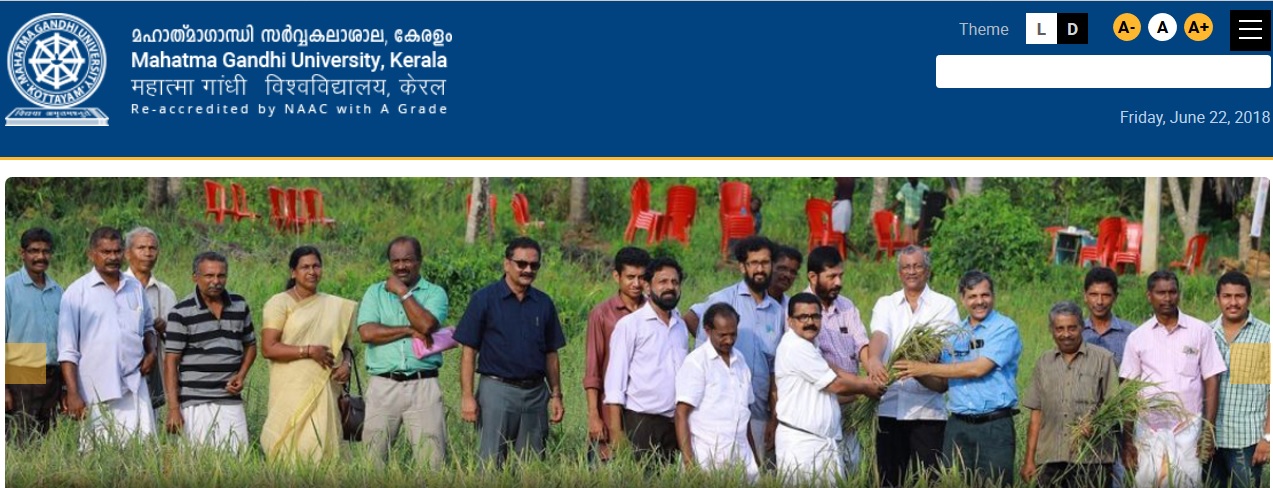MCSCS104 Object Oriented Software Engineering M.Tech Model Question Paper : mgu.ac.in
Name of the College : Mahatma Gandhi University
Department : Computer Science and Engineering
Subject Code/Name : MCSCS104/OBJECT ORIENTED SOFTWARE ENGINEERING
Sem : I
Website : mgu.ac.in
Document Type : Model Question Paper
Download Model/Sample Question Paper :
I : https://www.pdfquestion.in/uploads/mgu.ac.in/5012-1-MCSCS%20104%20Object%20Oriented%20Software%20Engineering%20set%202.doc
II : https://www.pdfquestion.in/uploads/mgu.ac.in/5012-2-MCSCS%20104%20Object%20Oriented%20Software%20Engineering%20set1.doc
MGU Object Oriented Software Engineering Question Paper
M.TECH. DEGREE EXAMINATION :
Branch: Computer Science and Engineering
Specialization: Computer Science and Engineering
Related : MGU MCSCS103 Web Security M.Tech Model Question Paper : www.pdfquestion.in/5011.html
Paper – I
First Semester
MCSCS104 OBJECT ORIENTED SOFTWARE ENGINEERING
(Regular – 2013 Admission onwards)
Time: 3hrs
Maximum: 100 marks
Answer the following Questions :
1) a) Explain the advantages and disadvantages of V Model and Modified V Model? (8)
b) Explain SCRUM (7)
c) Describe Stepwise Project Planning? (10)
Or
2) a) What is UML? Compare different models in UML. (8)
b) Explain Unified process? (8)
c) Describe the various life cycle models? (9)
3) a) Draw neat sketch of all UML Diagrams of banking system (10)
b) Identify the classes in Bank ATM System using Noun Phrase Approach. Explain (15)
Or
4) a) Explain Analysis activities from use cases to objects (10)
b) Explain the requirements elicitation activities (5)
c) Draw the sequence diagram for a library management system. (10)
5) a) Explain Object Constraint Language (13)

b) Explain Interface specification concepts (12)
Or
6) a) Briefly describe Interface specification activities (12)
b) Describe the System Design Activities? (8)
c) Explain OCL Collections like sets bags and sequences (5)
7) a) Explain Transform Mapping with an example(15)
b) Explain the difference between Black-box and White-box testing? (5)
c) What is Refactoring? (5)
Or
8) a) What is skill matrix? Briefly describe the project management activities? (13)
b) Discuss System Documentation (12)
Paper – II
MCSCS104
OBJECT ORIENTED SOFTWARE ENGINEERING
(Regular – 2013 Admission onwards)
Time: 3hrs
Maximum: 100 marks
Answer the following Questions :
1) a) Explain Iterative Activity Centered Models. (8)
b) Explain Agile process? (9)
c) What is workflow? Explain. (8)
Or
2) a) Explain Principles of Agile Manifesto. (15)
b) Explain various project estimation techniques (10)
3) a) Explain briefly about Analysis Object Models(13)
b) Draw neat sketch of UML Use Case Diagram of a railway reservation system (12)
Or
4) a) Describe briefly about the nonfunctional requirements (9)
b) Explain CRC approach using CRC (8)
c) Explain Requirement documentation template (8)
5) a) Explain the design goals of a System Design (13)
b) Describe the Design Patterns? (12)
Or
6) a) Briefly describe Interface specification activities (12)
b) Explain the Analysis patterns (13)
7) a) Explain Configuration management concepts (12)
b) Explain how to map contracts to exceptions? (8)
c) What is SPMP? (5)
Or
8) a) Explain Testing concepts and activities (13)
b) Explain how to map associations to collections? (12)
Syllabus
Module 1 :
System Concepts – Project Organization – Communication- Life cycle models – Unified Process – Interative and Incremental – Workflow – Agile Processes-Project Planning & Estimation
Module 2 :
Requirements Elicitation – Requirement Documentation-Use Cases- Unified Modeling language- Introduction, UML Diagrams – Class diagrams, Sequence diagrams, Object diagrams, Deployment diagrams, Use case diagrams, State diagrams, Activity diagram, Component diagrams – Case Study- Identifying Classes- Noun Phrase Approach, Common class Pattern Approach, Use-Case Driven Approach, CRC.
Module 3 :
Analysis Object Model (Domain Model) – Analysis Dynamic Models- Non-functional requirements – Analysis Patterns. System Design Architecture – Design Principles – Design Concepts – Design Patterns – Architectural Styles-Dynamic Object Modeling – Static Object Modeling – Interface Specification – Object Constraint Language.
Module 4 :
Mapping Design (Models) to Code – Model Transformation- Refactoring- Mapping Associations- Mapping Activities- Testing- Configuration Management – Maintenance process- System documentation – program evolution dynamics
References :
1. Bernd Bruegge, Alan H Dutoit, “Object-Oriented Software Engineering” Second edition, Pearson Education, 2004.
2. Craig Larman, “Applying UML and Patterns” Third edition, Pearson Education, 2005.
3. Stephen Schach, “ Software Engineering” Seventh edition, McGraw-Hill, 2007.
4. Ivar Jacobson, Grandy Booch, James Rumbaugh, “ The Unified Software Development Process”, Pearson Education, 1999.
5. Alistair Cockburn, “Agile Software Development” Second edition, Pearson Education, 2007.
M.Tech. Degree Examination :
Branch : Computer Science and Engineering
Specialization : Computer Science and Engineering
Model Question Paper – I : First Semester
MCSCS 105-4 Cloud Computing (Elective I) : (Regular – 2013 Admission onwards)
Time : 3hrs
Maximum : 100 marks
Answer the following Questions.
1a).Discuss about the development of cloud computing (10 Marks)
b)Explain about the cloud architecture (8 Marks)
c)Discuss about the advantages of cloud computing (7 Marks)
OR
2a)Explain about amazon EC2 cloud development platform (10 Marks)
b)Explain about the cloud storages in detail (10 marks)
c) Discuss abou the disadvantages of cloud computing (5 Marks)
3a)Describe about SOAP/WSDL web services (9 Marks)
b)Explain about Mashups (10 Marks)
c) Discuss about data access control for enterprise applications (6 Marks)
OR
4 a) Explain about Asynchronous rich interfaces (8 Marks)
b) Explain about virtualization technology (12 Marks)
c) Describe about multi entitty sypport in multitenant software (5 Marks)